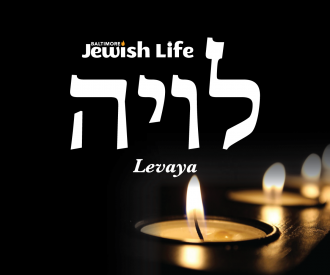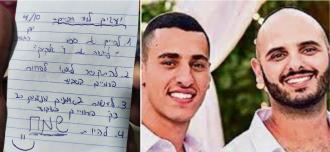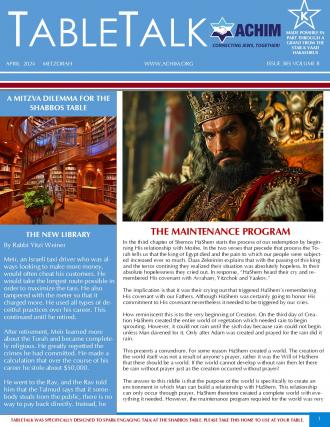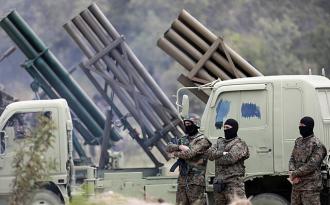If your kitchen is equipped with four ovens – for meat, dairy, pareve and fish you don’t need to read this article. However, if you do not have such a luxury, you will find various halachic details enumerated below quite relevant.
There are numerous factors involved in an oven “going back and forth” between meat and dairy or using an oven for fish or pareve.1 They include the following: a) The oven – Is it clean? Was it kashered? When was it last used? b) The food – Is it liquid? Is it covered? When was it prepared? c) Does the question arise to do the action l’chatchila (I can do this) or is it only okay b’dieved (it already happened)?
Note: The halachos addressed are based on the psak of HaRav Moshe Heinemann, shlit”a, Rabbinic Administrator of STAR-K Kosher Certification.2 The article addresses only the issues involved with regular gas or electric ovens – not cooktops, toaster ovens, broilers, microwave ovens, grills, double ovens, warming drawers, blechs, or hot plates. These appliances are beyond the scope of our discussion. It also does not address oven use on Pesach.
FOOD & OVEN CATEGORIES
There are two types of dishes that can be prepared in an oven. Dry3 foods (e.g., bread dough) create reicha (aroma). L’chatchila, we are concerned that reicha will impart its aroma into other food in the oven. However, in general, reicha from “dry” food has no impact on other keilim (vessels) in the oven.
Liquidy foods (e.g., a pan of meat that has gravy) create zayah (steam). Under certain conditions, zayah will cause other “opposite” foods and keilim in the oven to become non-kosher. If the pan is covered, there is generally no zayah (or reicha) issue, even though some steam might escape.
Foods that are “charif”, including spicy or hot foods (e.g., a dish with hot sauce) may also impart flavor when cooked uncovered in an oven.
Another important factor is when the oven was last used. An oven that was used within the past 24 hours to prepare hot meat or hot dairy is called a “ben yomo”. If it has not been used to prepare meat or dairy within the past 24 hours, it is an “aino ben yomo”. In cases of aino ben yomo, the halachos are typically more lenient than for a ben yomo.
USING AN OVEN FOR BOTH MEAT & DAIRY
If a pan with meat and a pan with dairy are covered, one may place both of them in an oven l’chatchila.4 This is true, provided that the pans do not touch each other and do not touch the “opposite” food (e.g., a meat pan may not rest on a rack with dairy residue).
If only one pan is covered and is on the lower shelf, it is also muttar l’chatchila. An uncovered meat pan that contains liquid may not be placed below a dairy pan in the oven (even if the top pan is covered).
It is prohibited for one to bake milk and meat products uncovered at the same time in an oven. B’dieved, if one erred and baked dairy food and a meat product in the oven at the same time (in different pans), the following halachos apply:
- If both the milk and meat dishes were uncovered, and they were not liquidy and not charif (sharp), everything is b’dieved kosher.5 If either the pan with meat or the pan with dairy is liquidy6 or sharp (and they are both uncovered), the oven and all the food in the oven may be treif and the keilim (vessels) used with these dishes may require kashering.7
- If two pans touch, the following applies: If a pan with meat touched a pan with dairy in the oven (and there was no residue on the outside of either one), the food and keilim are b’dieved kosher.8
- If a meat oven is clean, one may bake a dry, uncovered (or covered) dairy item in it.9 It is not necessary to first kasher the oven or wait 24 hours. If one wants to bake a dry, uncovered dairy item immediately after cooking meat, one should first wait for the oven (which must be clean) to cool down.
One should, l’chatchila, not bake an open liquid dairy item in a meat oven, even if the oven has no meat residue. B’dieved, if one baked an open liquid dairy item in a clean aino ben yomo oven after a liquid (or dry) meat item, the product is kosher. If the open liquid meat product had been heated in the oven within the previous 24 hours (ben yomo), and then an open liquid dairy product was heated in this oven, the keilim and oven may be non-kosher. A rav should be consulted.
“Clean” means there is no meat residue in the oven. If meat fell or gravy spilled and became charred enough, forming a black powdery substance (i.e., it can be pulverized by scratching it), or just left a stain, one may bake dry dairy in it (as previously indicated) as this substance no longer has the halachic status of meat. However, if there are pieces of meat or gravy that have not become charred, the oven is still considered fleishig and it is prohibited to bake uncovered dairy in it.
The ideal way to use an oven for both meat and dairy is to designate it as either meat or dairy. For example, if a family designates their oven for meat the following guidelines would apply:
Liquid or dry meat may be baked even if open, provided that the oven remains clean. May’ikker hadin, dry dairy items (even if open) may be baked in the oven after the open meat has been removed and the oven has cooled down. However, open liquid dairy items must be covered. Some advise to always cover the dairy item, even if it is dry.10 As previously indicated, the same halachos apply in a vice-versa case, (i.e., for a meat pan in a dairy oven).
One should not, l’chatchila, place meat directly (i.e., without a pan) on the oven racks or floor of the oven, unless it is used exclusively for meat; the same is true regarding dairy.
BAKING PAREVE IN A MEAT OR DAIRY OVEN
One may, l’chatchila, bake an open bread or cake (or any other dry pareve item) in an oven that was designated for meat and then eat it with dairy, as long as the oven is clean and there is no uncovered meat in the oven at the same time. Alternatively, one may bake a covered pareve item in an oven with uncovered (or covered) meat and eat it with dairy.
If uncovered bread or cake (or another pareve item) was baked in an oven at the same time as dry meat or in an unclean meat oven, one may not eat it with dairy. However, the pan remains pareve and one does not have to wait six hours to eat dairy after eating the bread or cake. B’dieved, if one later added dairy to this bread (e.g., spread butter) the bread may be eaten.
If one bakes uncovered cake with uncovered meat that was liquidy, one may not eat it with dairy and the pareve pan becomes fleishig. If the cake did not acquire a meat taste, one does not have to wait six hours after eating the cake. However, if the meat was liquidy, and the pareve item (e.g., kugel or cake) has a meat taste, one should wait six hours after eating the pareve item. Similar halachos apply to pareve that was baked with liquid dairy (and both pans were uncovered).
Meat or dairy bread is generally prohibited,11 and if one bakes bread or challos with uncovered meat that is liquidy the bread may become non-kosher. Pareve challos baked in an oven at the same time as dry meat (even if they are both uncovered) is permissible. As indicated above, one may not eat such challos with dairy.
FISH AND MEAT ISSUES
One may not bake uncovered fish at the same time as uncovered meat or in a fleishig oven that is not clean. However, one may bake fish (even if uncovered, with or without liquid) in a clean meat oven or with covered meat. If one baked (or reheated) uncovered challos in an oven at the same time as uncovered meat (liquid or dry) one may not, l’chatchila, eat the challos with fish. One should be extra cautious on Erev Shabbos, when there is a rush before lighting candles, not to heat uncovered items that may not be heated together.
ADDITIONAL IMPORTANT OVEN HALACHOS
One may be mafrish challah and burn it in the oven, but the “challah” must be in foil and not touch the racks.12 In chutz la’aretz, the entire challah one is mafrish need not be fully wrapped.13 It is enough for the challah to rest on a piece of foil, partially wrapped underneath, to ensure it does not touch the rack. If the challah was burned while touching a rack, the rack needs to be kashered.14
If one wants to cook in a treif oven, the kosher food should be double wrapped. That is why kosher airline meals heated in treif ovens are double wrapped.
If one baked an open kosher liquid item in a clean treif oven that had been used within the past 24 hours, the product may be treif.15 However, if one baked an open dry kosher item in a clean oven that heated tarfus within the past 24 hours, b’dieved, the food is kosher. If one baked a dry or liquid item in a clean treif oven that has not been used at all16 within the past 24 hours, the food is, b’dieved, kosher.
If an oven becomes treif or if one wishes to kasher an oven from milchigs to fleishigs,17 or vice versa,18 it can be kashered by self-cleaning it or by cleaning it with EZ-Off and then heating it to 550o F (or broil) for 40 minutes.19 This method of kashering is called “libun kal”. When kashering an oven in this manner, it is not necessary to first wait 24 hours.20
The kitchen of a Yiddishe homemaker is regularly occupied with family members preparing numerous meals and dishes, as well as various delicacies l’kavod Shabbos and Yom Tov, and other special occasions. Knowing how to navigate from milk to meat, and vice versa, ensures that these savory dishes are – and remain – 100% kosher.
- This article will elaborate on issues addressed in previous Kashrus Kurrents articles by Rabbi Moshe Heinemann, shlit”a – Oven Kashrus: For Everyday Use, and Rabbi Tzvi Rosen – Home on the Range. It will focus primarily on using the same oven for different foods that cannot be eaten together and will also touch on how to cook kosher food in a non-kosher oven and how to kasher an oven. Note: When we refer to a meat oven being compromised, the same halacha applies to opposite cases. For example, if we say “one may not bake meat in an oven with dairy residue”, we also mean the opposite case – one may not bake dairy in an oven with meat residue.
- Based on Shulchan Aruch Yoreh Deah siman 108, the nosai keilim, and poskim.
- For further details, see footnote 10.
- It is not advisable to put one pan above the other in order to avoid the contents of the top pan from dripping into the bottom pan.
- This is because, b’dieved, raicha is “lav milsa”.
- So it has “zayah”.
- Consult your rav. One example of a case that a rav could be matir (allow) the food is if the milk in the dairy dish is batel b’shishim in the meat dish.
- This is known as “shtay kedairos”. If there was residue, consult your rav.
- See footnote 10
- See Igros Moshe (Yoreh Deah 1:40), who elaborates on this topic and indicates that there seem to be two different categories of “dry” food. In a case of food that is dry, the Pri Megadim (see Pischei Teshuva Yoreh Deah 92:6) was mesupek (in doubt), but in a case of “yavesh mamash” (very dry), it is clearly permissible. Rav Heinemann, shlit”a, explained that it is for this reason that some individuals always cover dry dairy food in a meat oven, as it may be difficult to ascertain whether the food is liquid, “yavesh” or “yavesh mamash”. Nonetheless, may’ikker hadin, one can be maykil and place not only cookies but also cake, as well as uncovered pizza, in a clean meat oven.
- Chazal prohibited most types of breads that are made with dairy or meat ingredients (e.g., it is generally assur to add milk or meat to flour when baking a loaf of bread). For a full discussion of this topic, see Shulchan Aruch Y.D. Siman 97.
- The challah should also not be burned at the same time one is cooking in the oven (i.e., don’t burn the “challah” in the oven while the loaves of bread are baking). Either burn the challah in a different oven (e.g., toaster oven) or burn it before (or, if necessary, after) baking the bread.
- This is advisable so it adequately burns efficiently.
- Ideally with libun gamur, but b’shaas had’chak some matir with libun kal. Consult a rav.
- Consult a rav.
- If it was used within the past 24 hours but not with any tarfus, or one is not sure when it was last used, consult a rav.
- Although hagola may not be performed on a fleishig vessel to now use it for milchig, libun kal (e.g., the method described above in the article) and libun gamur (e.g., with a blow torch until each area turns red hot – another method of kashering an oven, but typically not practical in one’s home) may be performed to switch a kli from fleishig to milchig (and vice versa).
- Or from meat or dairy to pareve.
- For more details and information on kashering an oven or cooktop, oven use on Shabbos and Yom Tov, as well as general appliance information for the kosher home, see www.star-k.org.
- Unlike hagola, a 24 hour “down time” is not necessary when kashering with libun kal or libun gamur.











